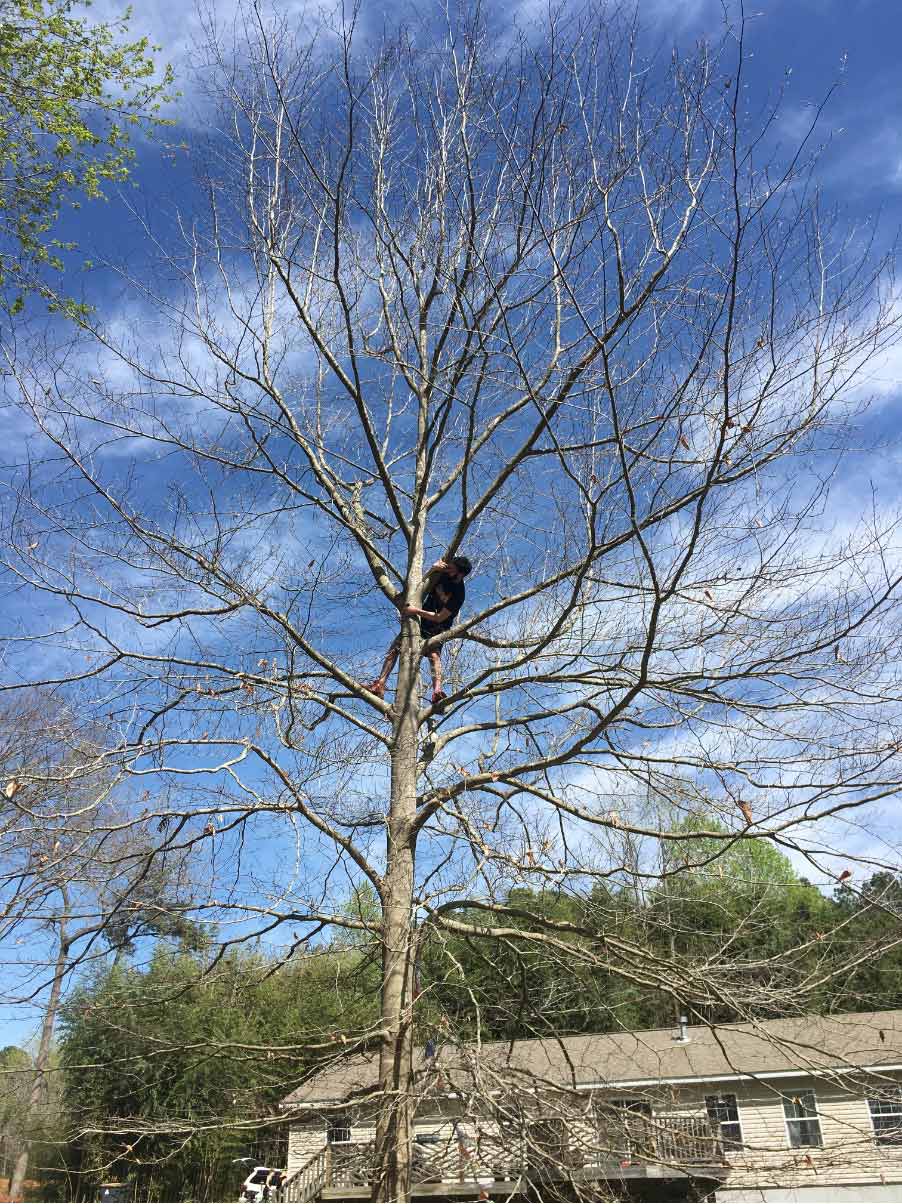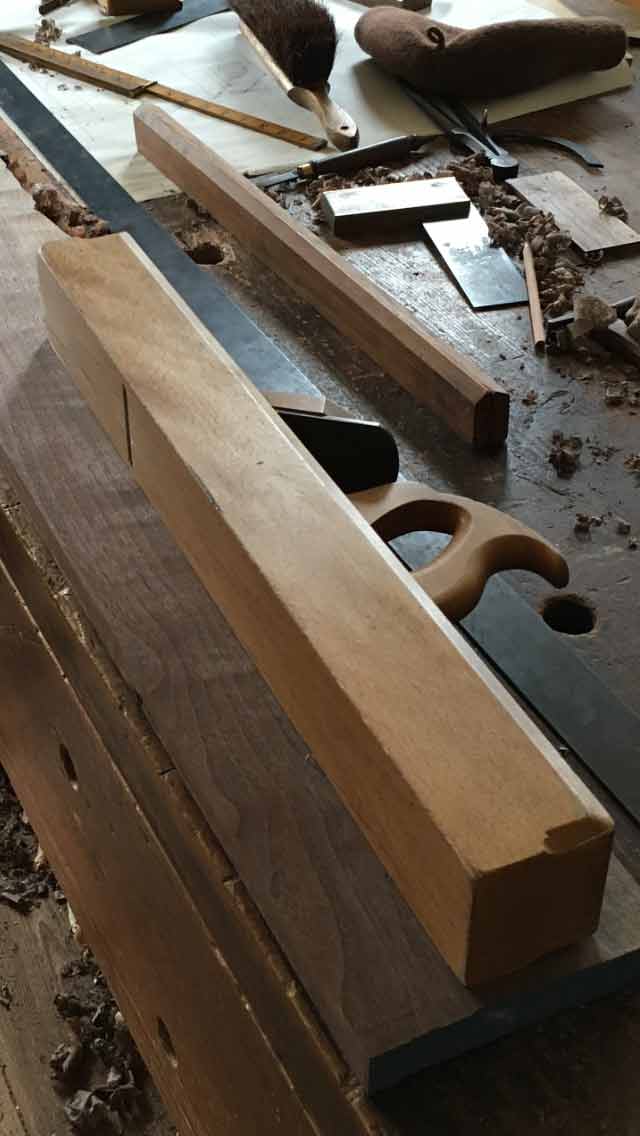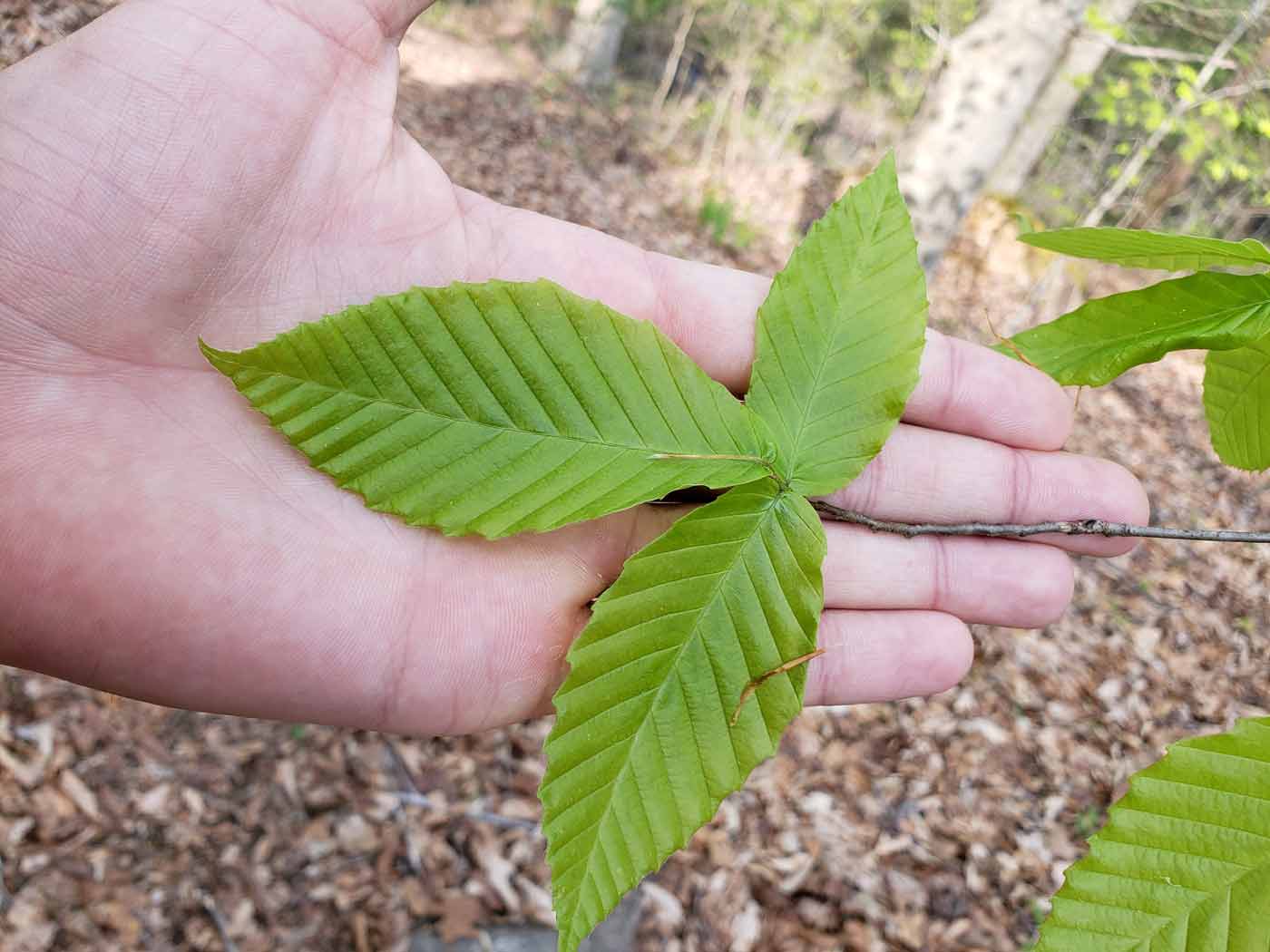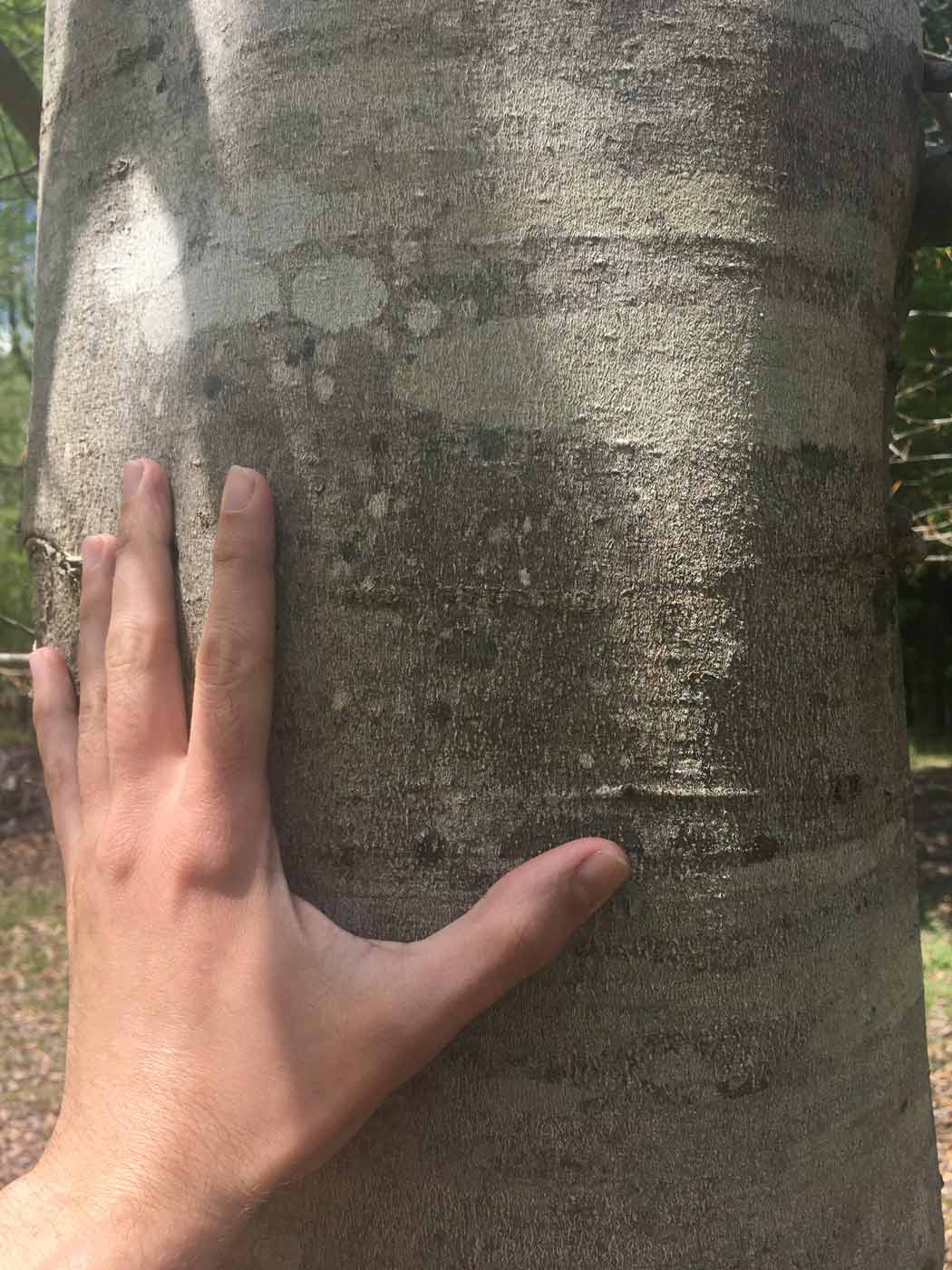Beech Trees and Other Delights
Guests at the Joinery love to ask how my coworkers and I became 18th-century woodworkers. It’s a fair question; our job is certainly unusual, and I would be lying if I said that my guidance counselor suggested “historic woodworking” to me as a career opportunity. I can’t speak for my fellow joiners, but my path to woodworking came from a love of the material itself. Growing up, I was fortunate to have access to a good-sized forest in my backyard. I’d spend whole days exploring the woods of my Maine home, returning each evening scratched, bruised, and covered in pine sap and spruce spirals.

My time spent in the woods cultivated in me a deep appreciation for things wild and green. Soon, my rambles became less about imaginary battles with orcs and ogres, and more about identifying trees and rocks and birds. There is a pleasure to be gained from knowing the difference between Red Maple and Sugar Maple, identifying an Osprey by its call, or knowing that the chunk of granite in your hand was formed before the continents achieved their current positions. Now that I live in Virginia, I have a whole new natural world to explore.
Climate has a dramatic effect on ecosystems. I moved seven degrees of latitude south, which means the forests here look a lot different from the ones I studied in Maine. For example, there are few firs and spruces here in the Tidewater, since both species are adapted to a much colder forest. Still, despite the different climate, I’ve found several familiar faces. One of those is beech. I have a nice one in my back yard (Figure 2).

Beech trees are fascinating. They’re a southern species that has managed to adapt itself to climates as cold as northern Vermont and Maine. They have smooth gray bark, which is ideal for keeping mosses, ferns, and vines from taking root. In a tropical forest, where beech trees evolved, this is an important adaptation. Smooth bark is a problem, however, when you must suffer through northern winters where the thermometer can drop to -40°. Any tree that adapts to survive such cold must contend with the warming rays of the sun, and then the sudden drop in temperatures when the sun goes down. If this doesn’t sound like a big deal, try rapidly heating, and then cooling a glass bottle. I’ll wait.
Did you do it? Did the glass crack and shatter? Is your kitchen a mess? This is the plight of northern trees. They warm in the winter sun, which gets reflected by the snow-covered ground. The heat causes them to expand, ever so slightly. When the sun goes down, they rapidly contract, which damages the bark and the wood fibers underneath. Most northern trees get around this by growing thick, craggy bark that acts like a radiator. Beech trees adapted to survive by their coloration. Their beautiful pale-gray bark reflects the heat of the sun and keeps their temperature down.
This adaptation leads to beech being a very wide-spread tree, which to my mind is a good thing. Beech trees can be indicators of a healthy, mature forest. When they reach old age, they are remarkably fire-resistant. Their fruit, the beech nut, supplies food for a variety of game animals. I even caught a blue jay snapping twigs off the beech in my backyard, gathering them to build a nest. From a woodworker’s perspective, the material that you can get from a beech is strong and stable. The only concern with the wood is protecting it from weather, as it isn’t very rot resistant. But if it stays indoors, beech furniture and tools will serve for years and years. I don’t build with beech very often, but I do use it every day. Strong, stable? Those are the qualities I want in my favorite tool, the plane. The body of each of my planes is made from beech. They’re strong, they hold their shape, and they last for generations if they are properly cared for.

Whether you’re exploring Colonial Williamsburg’s Arboretum or your own backyard, I hope you have the opportunity to get outside and enjoy the comforts of tree-lined streets or the forest. And maybe the next time that you find yourself outdoors, you’ll be able to identify beech trees on your own. If you’re like me, you’ll know them by their leaves, which grow alternate and are shaped like ovals, with small teeth along the edges. I’ve included a few pictures to help identify them in the wild. Take care, be healthy, and feel at home out in nature!


Peter Hudson is an apprentice Joiner at Colonial Williamsburg. He started with the museum in 2015 as a summer hire in the brickyard. In 2016, he was hired as one of three new apprentices in the Joinery. He is extraordinarily grateful for his fellow apprentices. They make the hard days brighter and the good days better. When not at his bench, Peter can be found telling stories around the table with his friends, hiking in the forests and mountains of various states, or cooking food for the folks he loves.
If you’re looking for further reading, may I recommend:
- With the Grain: A Craftsman’s Guide to Understanding Wood by Christian Becksvoort, Lost Art Press, 2015
- Reading the Forested Landscape: A Natural History of New England, by Tom Wessels, The Countryman Press, 1997.
And check with your local Department of Forestry. They have amazing guides to the trees in your backyard!
